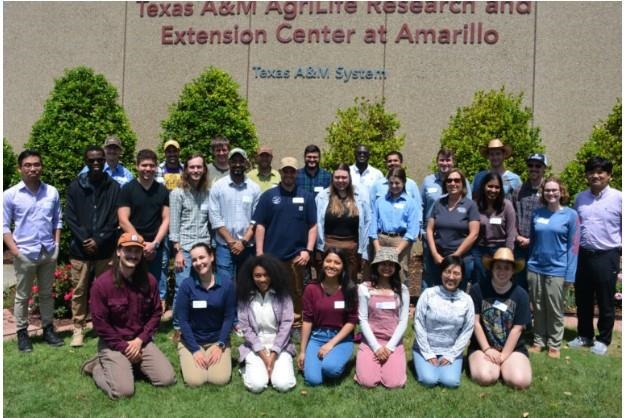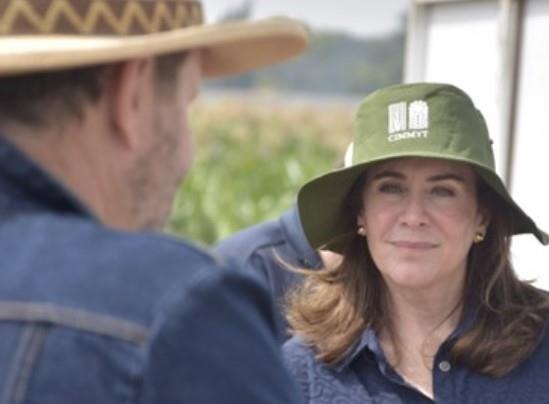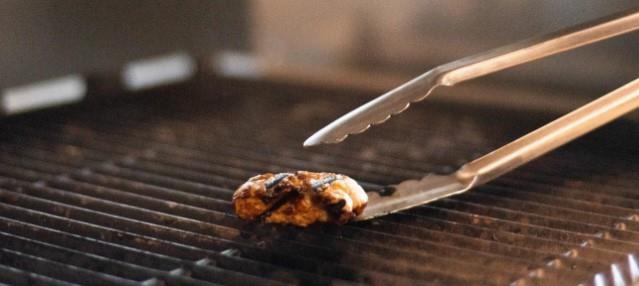By Ignacio Ciampitti and Adrian Correndo
Since the end of June, precipitation has been inconsistent with temperatures consistently warmer than normal across Kansas (Figures 1 & 2). Similar to corn fields, dryland soybean fields have started to experience heat stress combined with long periods without rainfall. High temperatures have been more frequent since the first weeks of July, exacerbating the drought effects.

Figure 1. Temperature anomalies by division for the period July 1-August 17, 2022. All divisions were above normal. Source: Kansas Weather Data Library.

Figure 2. Percent of normal precipitation by division for the time period July 1-August 17, 2022. Source: Kansas Weather Data Library.
The latest USDA Kansas Crop Progress Report and Condition (August 14, 2022) rated the soybean crop condition as 31% poor or very poor, 33% fair, 33% good, and only 3% as excellent. In parallel, soils are running out of available water (Figure 3), with both topsoil and subsoil moisture reported as >40% very short, ~37% short, with only about 20% as adequate, and 0% under water surplus.

Figure 3. Soil moisture measured as % of saturation at the 10 cm (4 inches) depth. Source: Kansas Mesonet.
Entering the second half of August, most soybean fields have entered into the reproductive period (~85% flowering), with already more than half (~57%) of fields setting pods. The lack of moisture combined with warmer-than-normal temperatures will likely accelerate the growing season, moving crop phenology along much faster than the overall plant growth.
This article reviews potential symptoms of drought and heat stress on soybeans.
Common drought and heat stress symptoms
Typically, soybeans can withstand drought stress reasonably well during the vegetative phases and is normally less sensitive than corn crop until late reproductive stages (e.g., pod formation). However, the combined effect of water shortage and heat stress has been extreme in many parts of the state, with soybean leaves starting to flip, curl, or even drop, increasing the abortion of flowers and pods.
Leaf flipping is one of the first symptoms that occurs when soybean plants are experiencing drought stress. Leaves flip over, exposing their undersides (Figure 4). This defense mechanism will help reduce transpiration but ultimately reduce crop growth and productivity.
Leaf curling/clamping is a second mechanism to conserve water by soybean plants. This stress response reduces the leaf area exposed, thus compromising crop productivity.
Leaf drop is a third, and more extreme, mechanism involving leaves that wilt and drop, especially during very intense and prolonged periods of water stress. Soybeans that were planted in June or early July are probably still young enough to withstand drought stress for several more weeks without dropping leaves. Soybeans planted in May or early June (and with much larger plant size) will be more vulnerable to rapid leaf loss at this time of year.

Figure 4. Leaf flipping. Photo by Ignacio Ciampitti, K-State Research and Extension.
Flower and pod abortion - When the crop is already at reproductive stages, a classic symptom is to show an increase in aborted flowers and small pods. Since indeterminate soybeans may produce flowers for about a month, the crop may be able to recover depending on the duration and intensity of the stress. The priority of the plants will be to provide resources to older pods, which may in turn increase the number of seeds per pod partially compensating for the flower and small pods abortion. If the drought and/or heat stress is intense, both the blooming and pod-setting periods could be shortened and compromise yields.
Impact on yield components
By the early reproductive stage, the effects of prolonged heat and drought are critical. As mentioned above, under drought conditions, soybeans in early reproductive stages will have increased flower and pod abortion. Soybeans can tolerate short periods of heat and drought at this time by aborting flowers and forming more later. But the crop will not bloom indefinitely and under prolonged heat and drought may be unable to recover. If no pods are set after the normal blooming period of three to six weeks, it is possible that the crop will not set any pods or make any seed yield. Determinate varieties have shorter blooming periods than indeterminate varieties.
Because of extremely high July and August temperatures, irrigated fields are not immune to the effects of drought stress. With numerous days over 100 degrees, even irrigated plants can fail to set or fill pods. If stress continues during seed filling, the crop will have fewer possibilities to compensate yield reduction, with major impacts on final seed weight. The pod setting marks the beginning of the most critical period of the crop, when the main yield component is determined: the seed number. Any stress reducing biomass accumulation during this critical period will impact the number of seeds, and thus yield.
Management considerations
Harvest - Soybeans with 50 to 90 percent leaves and a good number of pods at the R6 stage have a good chance of producing a decent crop if allowed to mature -- especially if timely rains occur. In that case, it would probably best to harvest the crop as normal, even though some of the leaves and flowers have dropped due to stress. Good yields are not guaranteed even if the plants are in good shape at R6.
Cutting for hay - Prolonged heat and drought stress can cause considerable leaf area loss and soybean yield reduction. If the crop is so drought-stressed that it’s losing leaves or not setting pods, it may be time to cut it for hay. This might have appeal for livestock producers who are facing dry pastures and supplemental feed costs. The decision depends on the stage of growth and condition of the plants. If possible, it’s best to hold off on making any decisions about cutting soybeans for hay until the plants are moving into seed fill (the optimal time to cut beans for hay to retain digestible nutrients).
However, holding off until this stage of growth may not be possible if plants in the vegetative stage are dropping half or more of their leaves already. If too many leaves have dropped, the crop has a reduced value as a hay crop. Producers may need to make the decision to cut for hay while the plants are still in the vegetative stage, before the beginning seed fill stage, and before the soybeans lose too many leaves. Soybean plants that still have 30 percent of their leaves can produce 0.75 to 1.25 tons dry matter of hay per acre, with about 13 percent protein and 48 percent in-vitro dry matter digestibility. The more leaves a plant has, the more hay tonnage it will produce.
The “grey area” is where there are plants with 30 to 50 percent of leaves remaining since those leaves have the capability of filling pods if it rains and of making a soybean harvest that is worth more than the price of the hay.
Final considerations
Scout your acres for drought and heat stress so you can take timely decisions. Yield reductions can be expected also due to poor seed-filling conditions that may reduce the seed weight.
Source : ksu.edu